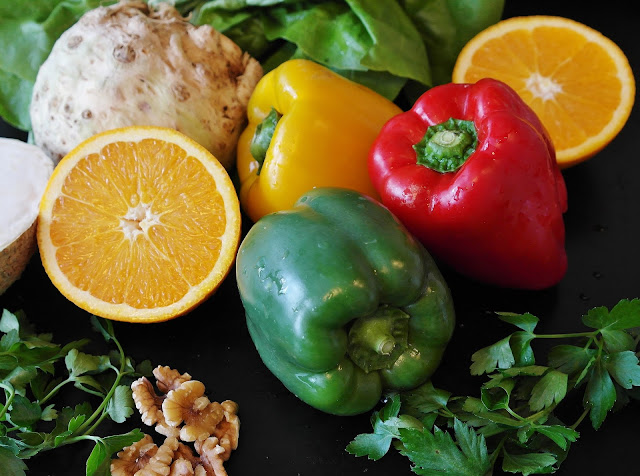Hey there! Are you looking for a healthy meal plan for effective and sustainable weight loss?. In this article, I'll guide you through the steps of planning and preparing nutritious meals that will help you reach your fitness goals.
Let's start with the basics. Weight loss occurs when you consume fewer calories than your body burns. However, it's important to keep in mind that not all calories are created equal. A calorie from a slice of cake is not the same as a calorie from a vegetable. The key to successful weight loss is not just about reducing calories but also making healthier food choices.
Step 1: Calculate your daily calorie needs
The first step to creating a healthy meal plan is to determine your daily calorie needs. This can be done by calculating your basal metabolic rate (BMR) and then multiplying it by an activity factor that reflects your level of physical activity.
BMR is the number of calories your body needs to maintain basic bodily functions, such as breathing, circulation, and digestion. There are many BMR calculators available online that can help you determine your daily calorie needs.
For example, if your BMR is 1,500 calories and you have a sedentary lifestyle, your daily calorie needs would be 1,800 calories (1,500 x 1.2).
Step 2: Determine your macronutrient needs
After calculating your daily calorie needs, the next step is to determine your macronutrient needs. Macronutrients are the nutrients that your body needs in large amounts, namely protein, carbohydrates, and fats.
Protein is important for building and repairing muscle tissue, carbohydrates provide energy for physical activity, and fats help with hormone regulation and nutrient absorption.
The recommended macronutrient distribution for weight loss is approximately 40% carbohydrates, 30% protein, and 30% fats.
For example, if your daily calorie needs are 1,800 calories, your macronutrient needs would be approximately 180 grams of carbohydrates, 135 grams of protein, and 60 grams of fat.
Step 3: Choose nutrient-dense foods
The next step is to choose nutrient-dense foods to meet your daily macronutrient needs. Nutrient-dense foods are foods that are high in nutrients but low in calories. Examples of nutrient-dense foods include:
- Vegetables: broccoli, spinach, kale, carrots, peppers, and more
- Fruits: berries, apples, oranges, bananas, and more
- Whole grains: brown rice, quinoa, oats, whole wheat bread, and more
- Lean proteins: chicken breast, turkey breast, fish, tofu, and more
- Healthy fats: avocado, nuts, seeds, olive oil, and more
These foods should make up the bulk of your diet as they provide the necessary nutrients for optimal health and weight loss.
Step 4: Plan your meals
Now that you know your daily calorie and macronutrient needs and have a list of nutrient-dense foods, it's time to plan your meals. Meal planning is essential to ensure that you meet your daily nutrient needs and stay within your calorie limits.
A good starting point is to plan for three main meals and two snacks per day. Each meal should include a source of lean protein, a complex carbohydrate, and healthy fats.
For example, a typical day of meals might look like this:
- Breakfast: Greek yogurt with mixed berries and almonds
- Mid-morning snack: apple slices with peanut butter
- Lunch: chicken breast with brown rice and steamed vegetables
- Afternoon snack: baby carrots with hummus
- Dinner: grilled salmon with quinoa and roasted vegetables
When planning your meals, consider prepping ingredients in advance to save time and make healthy eating more convenient. You can cook a big batch of quinoa or brown rice at the beginning of the week and use it for different meals throughout the week. You can also chop vegetables and store them in the fridge for easy access.
Step 5: Prepare your meals
After planning your meals, it's time to prepare them. Meal prep can be done in different ways depending on your preferences and schedule. Some people prefer to cook all their meals for the week on one day, while others prefer to cook each day's meals the night before.
One tip for successful meal prep is to use a slow cooker or Instant Pot to make large batches of soups, stews, or chili. These meals are easy to make and can be stored in the fridge or freezer for later.
Another tip is to use portion control containers to help you measure out your food and stay within your calorie limits. These containers are designed to help you easily portion out your meals and snacks.
Step 6: Monitor your progress
Finally, it's important to monitor your progress and make adjustments as needed. Weigh yourself once a week to track your progress and make adjustments to your meal plan as needed.
If you're not losing weight, you may need to reduce your calorie intake or increase your physical activity. On the other hand, if you're losing weight too quickly, you may need to increase your calorie intake to ensure that you're getting enough nutrients.
Conclusion
Creating a healthy meal plan for effective and sustainable weight loss requires planning and preparation. By calculating your daily calorie and macronutrient needs, choosing nutrient-dense foods, planning your meals, and preparing them in advance, you can make healthy eating a habit and reach your fitness goals.
Remember, weight loss is not just about reducing calories, but also making healthier food choices. Incorporate a variety of nutrient-dense foods into your meals and snacks to ensure that you're getting all the necessary nutrients for optimal health.
With a little bit of planning and preparation, you can achieve your weight loss goals and enjoy delicious and nutritious meals at the same time. Happy meal planning!

No comments:
Post a Comment